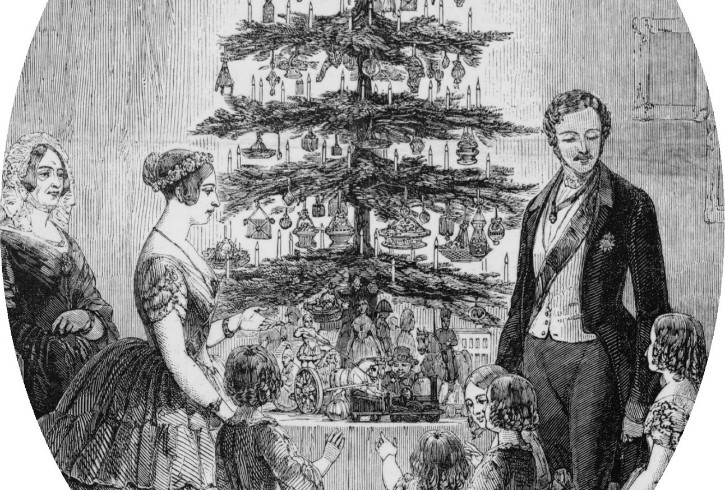What do you want for Christmas? Socks? A Netflix subscription? A drone? It’s interesting to see how tastes change but also endure. Longer ago than I care to remember—but certainly more than 30 years since, when all my school friends were asking for the brand-new Optimus Prime Transformers toy—I asked for a Mamod working model steam engine.
Now, I may have been the odd one out at school in January 1985, but unwittingly I was continuing a tradition that went back to the 1840s and even had royal involvement!
On a recent television programme about Christmas appeared an image of Queen Victoria and Prince Albert and their children around a Christmas tree. Nothing unusual about that, you may say, but on closer examination of the picture, among the dolls and other figures, there’s a model steam locomotive.

The image is from an 1848 Illustrated London News and is well known, as it has been used to demonstrate Prince Albert’s introduction of the Christmas tree to the British Isles, but the presence of the locomotive is particularly exciting this year.
The National Railway Museum’s exhibition Brass, Steel and Fire—which opened in September and runs until April 13 2020—is devoted to model steam engines mainly from the 19th century.
Among the engines on display are experimental models and models made to sell ideas to railway companies and engineers. Other models were made for the joy of making, operating or to show the skills of craftsmen and companies, such as opticians and scientific instrument makers. Some models were made simply to play with—reflecting modern technology in the domestic environment and inspiring youngsters to engage with railways and engineering at home, and it’s likely that this is the type of model underneath the royal tree.
Fired by methylated spirit or heated by a hot bar heated in the parlour fireplace, the tiny steam engines were able to run on rails, or had their wheels set at an angle to allow them to operate without tracks and travel in circles around the floor. An endearing habit of these models was their propensity to drop hot water, oil and meths as they ran along, giving rise to the nickname of “dribbler” to these toy steam engines.
The presence of one of these engines on a picture of Victoria and Albert at home shows us not only the popularity of the model railway engine, but also the excitement stimulated by the railway at the time.
With the trains of the 21st century undergoing resurgence and renewal, there is a flurry of interest in railway models at present, and I’d bet there will be many train sets under Christmas trees this year. There may even be a dribbler or two with some lucky collectors—but sadly not me this year!
Brass, Steel and Fire gives a unique showcase into the past, but also has a look to the ways that models have inspired and continue to inspire. If model steam engines were good enough for the royal family in 1848, come to the National Railway Museum this Christmas and see for yourselves.
